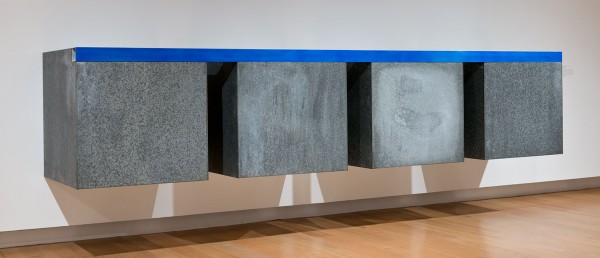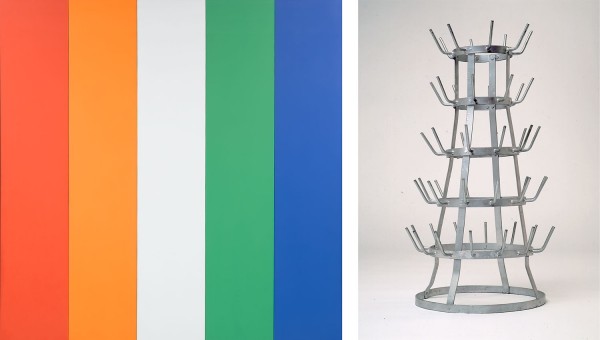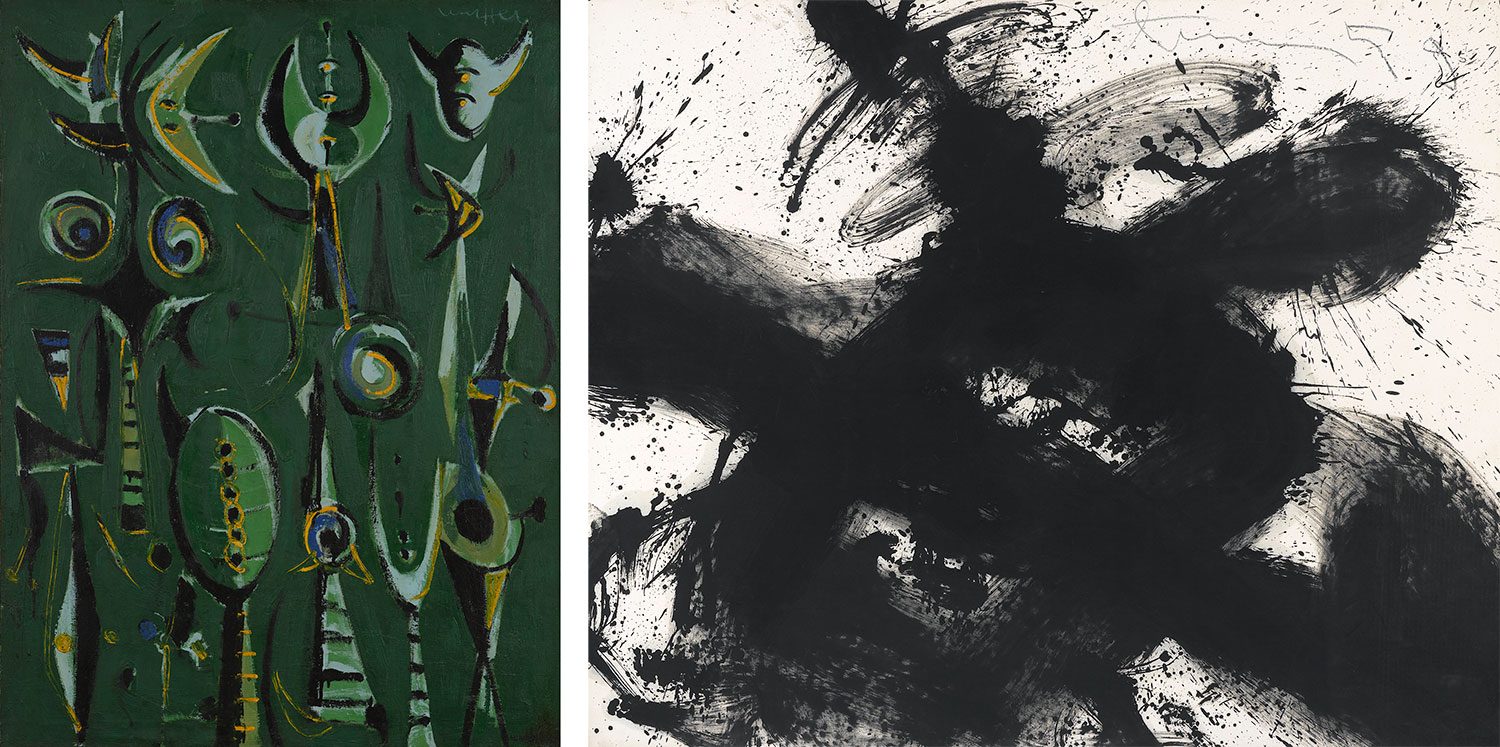New Installation in the 20th-Century Galleries

Donald Judd (American, 1928–1994), Untitled, 1966, galvanized iron and painted aluminum, Norton Simon Museum, Gift of Mr. and Mrs. Robert A. Rowan, Art © Judd Foundation/Artists Rights Society (ARS), New York
Starting in late October, the Museum’s 20th-century art wing will be closed for approximately six weeks as we perform some much-needed improvements and rehang the collection. Although many of our best-known works will be on view in the new installation, the display will be reconceived to feature new dialogues between paintings and sculpture. It will be primarily organized by shared stylistic and thematic qualities, with the addition of a number of works that have rarely been exhibited in the permanent collection galleries.

Ellsworth Kelly (American, 1923–2015), Red Orange White Green Blue, 1968, oil on canvas, Norton Simon Museum, Museum Purchase, Fellows Acquisition Fund, © Ellsworth Kelly Foundation; Marcel Duchamp (French, 1887–1968), Bottle Dryer (Bottlerack), 1963 (replica of 1914 original), readymade bottle-dryer of galvanized iron, Norton Simon Museum, Gift of Mr. Irving Blum, in memory of the Artist, © Association Marcel Duchamp / ADAGP, Paris / Artists Rights Society (ARS), New York 2023
To take advantage of the dramatic high ceilings and spacious feel of the skylit main gallery, two large-scale works that have been off-view for a number of years will be installed: Ellsworth Kelly’s bold, five-panel painting Red Orange White Green Blue (1968) and Donald Judd’s untitled sculpture from 1966—four iron and aluminum boxes topped with a distinctive blue stripe. Judd’s rectilinear work is paired with Marcel Duchamp’s Bottle Dryer (Bottlerack), a “readymade” sculpture derived from an industrially produced rack for drying wine bottles. Through these two very different approaches to sculpture, both made from galvanized iron, we intend to tell a broader story about sculptural practice in the 20th century and the range of ways that artists explored the overlap between “commercial” and “artistic” production.
Across the room, the Museum’s carved marble sculpture The White Gunas by Isamu Noguchi (1946) returns after undergoing conservation treatment. An extraordinary achievement in equilibrium, Noguchi’s sculpture will flank a selection of like-minded paintings by European artists Vassily Kandinsky and Paul Klee that express a similarly spiritual dimension to abstraction through the delicate balance of shapes in space.

Emerson Woelffer (American, 1914–2003), Inner Circle, 1949, oil on canvas, Norton Simon Museum, Gift of Casey Wasserman, © Estate of Emerson Woelffer; Walasse Ting (American, 1929–2010), Untitled, 1959, oil on canvas, Norton Simon Museum, Anonymous Gift, © Estate of Walasse Ting
In the final gallery, alongside the Museum’s striking and iconic Basel Mural paintings by Sam Francis, we introduce a recent acquisition by American artist Emerson Woelffer, generously donated by Casey Wasserman. Entitled Inner Circle and dating to 1949, the painting depicts a series of surrealist, semi-figural forms that are suggested through vertical constructions of ovals, circles, elongated triangles and crescent shapes in a palette of deep green, yellow and pale blue. The largest and most significant work by Woelffer to enter our collection, it dates to a particularly interesting moment in the artist’s career, when he was associating with prominent Abstract Expressionist painters in New York such as Jackson Pollock and Lee Krasner. Bridging the gap between the Museum’s strengths in early 20th-century figurative art by artists like Pablo Picasso and Georges Braques, and gestural abstraction by postwar American painters Walasse Ting, Richard Diebenkorn and John Altoon, the presence of Inner Circle in the permanent collection display allows us to chart a more cohesive history of artmaking in the 20th century.
We hope you will enjoy visiting the modern art wing this winter, discovering new works of art and rediscovering favorites presented in a new context.
Emily Talbot, Chief Curator
This article first appeared in the Museum’s Fall 2023 Newsletter.
